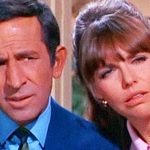Bob Dylan rose to stardom virtually overnight but it required a few very turbulent and taxing years to go by for the folk-rock icon to feel like what he was doing was actually worth his time and that he had the kind of control of his life and career that he truly desired. His journey, like that of so many other musical legends that came before him, took him down a rocky road complete with twists and turns and uncertainty, but eventually he found his way.
Before he found his path. he almost called it quits but thanks to one manic late-night writing sesh and some experimentation behind the piano keys, a whole generation was blessed with his definitive career-defining hit ‘Like a Rolling Stone”. Dylan very easily could have become an insignificant blip in musical history, but instead he went on to become one of the most esteemed and oracular musical artists of all time.
Dylan Felt Depleted By His Music
Shortly after celebrating his 22nd birthday, Dylan dropped his second studio album, The Freewheelin’ Bob Dylan. The record was historic in the sense that it elevated Dylan out of the underground folk clubs of Greenwich Village and helped him find a wider national audience.
His unique brand of political rock-folk fusion was unlike anything else available in record stores at the time. Through his candid poetry-fueled music, Dylan established himself as a key player in the counterculture and civil rights movements. The American youth loved Dylan but once he embarked on his tour England in 1965 he became an international sensation as well.
Even with all of this success, Dylan still felt like something was missing. The feeling of deep personal fulfillment was alluding him. That chapter of his life was complicated to say the least. He got into a spat with Ed Sullivan and flaked on some of the biggest talk shows in America. He came under fire for being a dope smoker and for getting mouthy at some of his performances. And all of a sudden he felt completely alienated from the folk scene that was such a critical piece of his personal identify.
Even though he already had several hit singles like ‘Blowin’ in the Wind’, ‘The Times They Are a-Changin’ and ‘Subterranean Homesick Blues’ that charted well, Dylan wasn’t sure that he was really cut out to be a star. He missed the simpler times when he felt accepted in his community and wasn’t accused of being a sell-out.
Dylan told Playboy back in 1966 that he seriously considered calling it quits. He felt drained. He was singing songs that he really didn’t feel like singing and playing shows when he didn’t really want to. It was dragging his spirit down. The key takeaway from that interview was when Dylan reflected how ‘It’s very tiring having other people tell you that they dig you [when] you yourself don’t dig you.’
Yes, he was feeling disillusioned and in the process he felt like he was losing himself. The feeling really overtook him in the spring of 1965 when Dylan was wrapping up his tour of England. While in London Dylan told his manager that he intended on quitting. It really didn’t help that his latest album ‘Bringing it All Back Home’ was met with mixed reviews and stark criticism for straying from his folk roots by introducing an electric guitar and backing band. You might recall this as the era when Dylan was disparagingly referred to as ‘Judas’ by disgruntled fans that felt like he was betraying the folk community.
By the way, if you’re diggin’ this video so far, make sure you show us a little support by hitting the like button and subscribing to our channel if you haven’t already.
And make sure you watch the whole video to see not only how Bob Dylan came up with his hit song ‘Like a Rolling Stone’ but also how he managed to score his first number 1 chart topping single just this year.
‘Like A Rolling Stone’ Wasn’t Supposed To Be A Song
After returning from his tour of England, Dylan took a step back from the demands of the public by seeking refuge in Woodstock, New York where he began writing again. He needed that time to sequestor himself and put everything that came into his mind down on paper. He needed that cathartic release of taking all of his troubles and venting them through his poetic expression.
For 10 hours, he furiously scribbled, transmuting his steady hatred for what his life had become and the frustration he felt for losing himself into poetry. He never intended to write a song. According to some interviews, Dylan recalls that the document he produced in that writing session was 10 to 20 pages in length.
In the spirit of Jack Kerouac’s ‘On The Road’, Dylan had successful captured one seamless yet lengthy steam-of-consciousness onto the pages of his notebook. At first he thought that maybe it would make for a good intro to a novel or something, but then he was struck with a flash grenade of inspiration.
At no-point during his feverish poetic binge did he consider that was he was writing might become a song, but one day he found himself sitting at his piano grasping for inspiration when he glanced at his notebook and read the word’s “How does it feel?”. It was as if he was suddenly struck by a lighting bolt of creative revelation.
One moment, he was shuffling though his writings looking for suitable inspiration for lyrics and the next he was experiencing one of the biggest breakthroughs of his career. He immediately got to work and wrote the entire iconic song down in one session.
Penning that song helped Bob rediscover his sense of purpose and passion. It helped realign his careers trajectory and reconnect himself to that inner source of creativity that flows like a fountain. While that spring may have previously slowed to a trickle, now it was gushing forth like a geyser of visionary ingenuity.
Dylan had never written anything like that before. It came to him so suddenly. After finishing the song, he no longer desired to write a novel or anything else. He just wanted to write songs.
While ‘Like a Rolling Stone’ wasn’t quite as overtly political as some of Dylan’s other songs, it did capture the sense of cynical ire and revolutionary angst that defined the youth culture of the generation.
The song’s four verses dealt with a once prosperous and affluent princess that Dylan referred to as Miss Lonely who experiences some kind of socio-economic fall from grace. ‘You better take your diamond ring, you better pawn it babe’ Dylan admonishes – as if to say that further retribution was yet to befall her.
Many have attempted to decipher who ‘Miss Lonely’ might have represented. Some suggest that it was former lover and fellow musician Joan Baez or actress Edie Sedgewick, whom Dylan also supposedly had a brief relationship during that period. Dylan loathed Andy Warhol’s pretentious factory scene and many of the people described in the song could very well be referencing that art collective.
Dylan Continued On With A Backing Band
Despite having very little history with the man, Dylan sent for blues guitarist Mike Bloomfield to come up to Woodstock to help him finish recording the song. At that point the track was very raw and not even close to being finished. It would require serious experimentation and rearrangement to get all the kinks worked out.
Decades later when the original hand-written lyrics were auctioned off for a record-setting $2 million, it was revealed that many of the original lyrics were swapped out for other ones that that the chorus was originally completely buried on the fourth page of notes.
Bloomberg assumed that Dylan had requested him to play the blues – seeing as that was his signature style – but when he got to Woodstock, Dylan told him that he didn’t ‘want any of that B.B. King stuff. After being told that, Mike was at a loss, but continued to mess around with the song until he found a style that pleased him.
‘Like a Rolling Stone’ went on to become Dylan’s highest-charting single up until that point. It reached number 2 on the Billboard Hot 100. Dylan credits the song for helping him revive his passion in music. He’s even described the song in spiritual terms in some later interviews.
He told the LA Times in 2004, that writing the song was a lot like a ghost had come and wrote it for him. “It gives you a song and it goes away.” Dylan remarked. “You don’t know what it means. Except the ghost picked me to the the song.”
Dylan’s First Number One Hit
We don’t know what kind of magic he was tapping into when he wrote ‘Like a Rolling Stone,’ but it seems that Bob Dylan has still got it.
In April of 2020, Dylan earned his first ever US number one Billboard hit with his delightfully subdued 17-minute concept track ‘Murder Most Foul’. It was actually the first original song that Dylan released in nearly eight years. The track was released in March 27 and deals with the assassination of John F. Kennedy in 1963.
The song features Fiona Apple on piano. It unfolds slowly but in addition to documenting the historic slaying of the 35th President, it describes the unfolding of the counterculture movement while giving shout outs to all the eras most influential musicians, films and pop culture references.
Nielsen reported that ‘Murder Most Foul’ sold over 10,000 downloads in the first days that it was available, and music mags like Pitchfork, NME and Rolling Stone have included it on their best of 2020 lists.
Can you imagine if Bob Dylan had actually thrown in the towel before writing ‘Like a Rolling Stone”? That’s honestly an alternate reality that I’m not interested in seeing.
Bob Dylan has had one of the most prestigious careers in music history. He’s sold more than 100 million records. He’s received more awards that we got time to list. He’s a Presidential Medal of Freedom Recipient and he’s an inductee in both the Nashville Songwriters Hall Of fame and the Rock and Roll Hall Of Fame. Oh yeah, he won a Nobel Prize for literature as well.
Tangled Up In Blue, Mr. Tambourine Man, Hurrcane, Just Like a Woman – Bob Dylan has come up with with some seriously groud-breaking songs. What’s your personal favorite? Let us know in the comments section below.
And before you go, make sure you take a second to give this video a like and subscribe to our channel. Tap the bell icon while you’re at it to turn on notifications so you can keep up with all of our latest videos.


